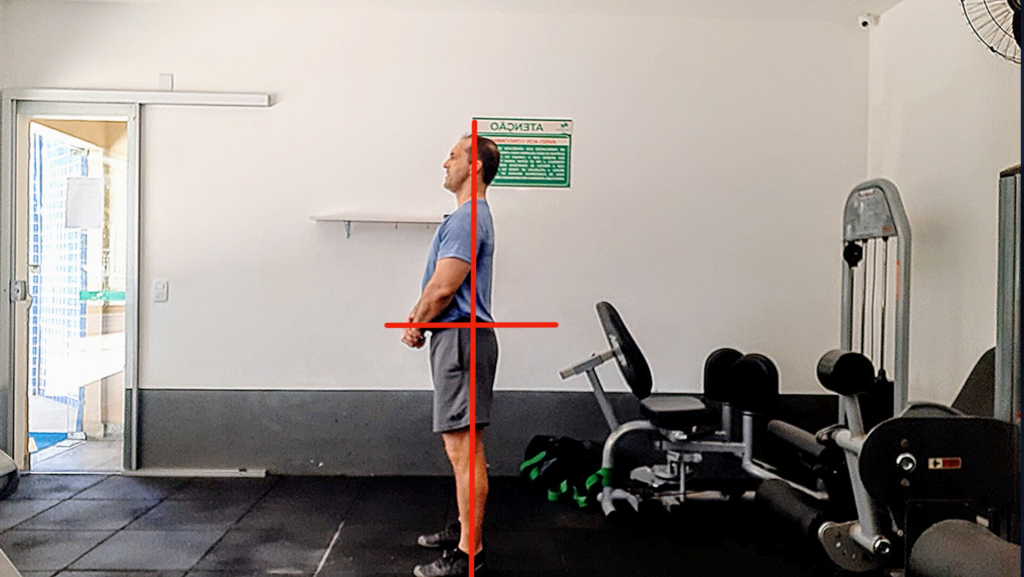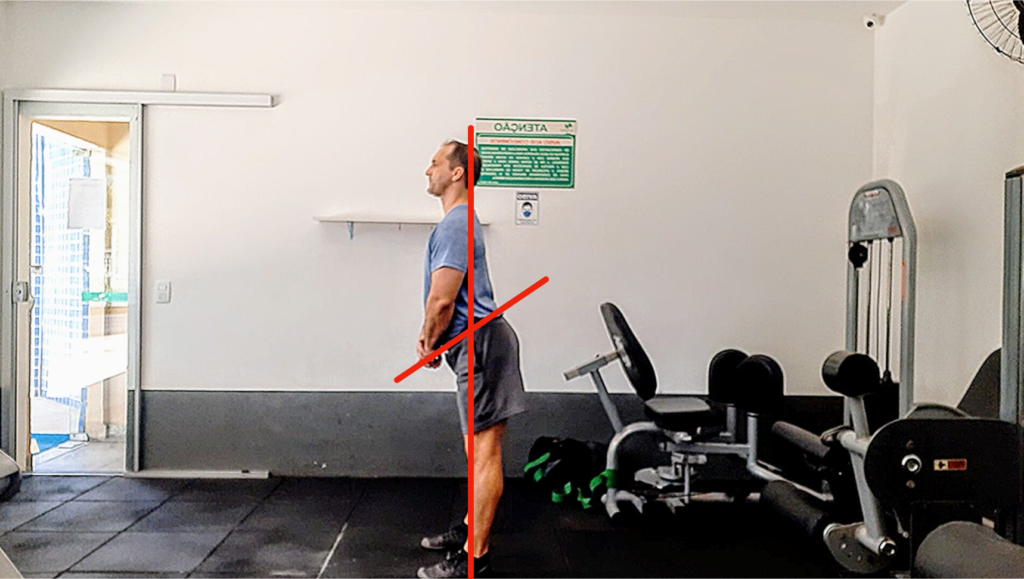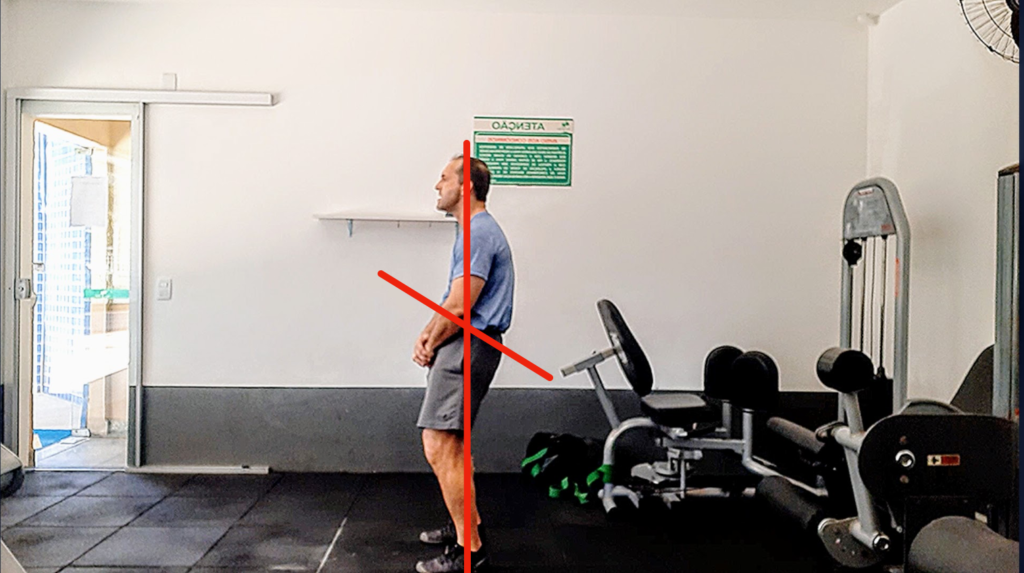Run and Sprint Faster When Your Hips are in this Position
It is not your fault. No one ever showed you the correct hip position. You just run, sprint, and move from your basic instincts. However, let’s get you on track and up to date. The correct hip position is essential. It is the gateway to enhancing your speed, power, and explosive potential. It’s also crucial to preventing injury. So, let’s look at the correct way and some compensated incorrect positions for running and sprinting.
What is Lumbopelvic Control?
Lumbopelvic control is essential. It is the ability to control the position of your pelvis. For example, sometimes you need to put your back into hyperextension and sometimes into flexion. However, the neutral hip position is where stability is achieved. This is accomplished by strengthening your glutes because your glutes support and maintain your hips in an upright, balanced position. And when the hips are in a neutral position, it activates many other aspects and functions.
For example, the hip neutral position is essential because it activates and synchronizes the stability of the core and lumbar spine. And when the core and lumbar are stable, the rest of the spine is aligned effectively, as well as the neck and shoulders.
The neutral hip position produces the greatest amount of stability and is the position where you can transfer the greatest amount of force safely. As I said, it is the gateway to enhancing your sprint potential.
Not using the neutral hip position caps your physical potential. And as you train and develop your quest to become faster, it leads to increased chances of injury because of the lack of stability. Movement compensation, misalignment, dysfunction, and poor technique are injuries waiting to happen.
For instance, an anterior or posterior hip tilt causes the spine to adapt to a dysfunctional position that negatively impacts the spine’s alignment and stability. Consequently, it leads to poor leg swing, weak knee drive, and unyielding ground contact, creating faulty sprint dynamics.
Carlin Isle is the fastest man in Rugby 7’s. He ran a 40-yard dash in 4:13 seconds. However, as he told me in the past, the key to sprinting fast is getting your hips in the correct position. Carlin was referring to lumbopelvic control, the neutral position.
Neutral Position
The neutral hip position is going to produce the greatest amount of stability. This is important because as you increase and generate high amounts of force to enhance your run and sprint, you need to have stability present. Stability decreases and prevents your chances of injury, pain, and strain as force goes up. And this is what opens the gateway to enhancing and maximizing your physical potential.
The neutral hip position allows the knee to lift high for maximal knee lift and drive. It creates a perfect ground strike for maximal force, speed, and explosive transference and take-off. And it maximizes the ranges for all leg swing phases without restriction.
Hip Compensation and Movement Dysfunction
Not all dysfunction is created equal. The different faulty, incorrect hip positions will promote further compensations when sprinting and running. The anterior hip tilt presents similar but different movement compensations and dysfunctions than the posterior hip tilt.
One crucial thing to understand is as you compound strength and force on misalignment and dysfunction from training. It is a strain or injury waiting to happen.
Anterior Hip Tilt (AHT)
You must focus on preventing an anterior hip tilt during running and sprinting. To do this, you need to be mindful and have the conscious ability to do so if your hips are not in a neutral position.
The anterior tilting of the pelvis increases the chances of lumbar strain, hamstring injury, and knee and ankle pain. This is because the forces generated are not balanced and stabilized, limiting the transference of force through the body.
Weak glutes are often the culprit that creates an AHT, resulting in tight hip flexors and poor core stability. In addition, this posture is responsible for many back and hip problems and knee and ankle pain.
The AHT has poor knee lift, drive, and leg swing phases. The floor contact phase of the foot will be behind rather than under your hip.
Posterior Hip Tilt (PHT)
A rounded lower and thoracic spine characterizes a posterior hip tilt. It is when the pelvis tucks under the glutes. The PHT increases your chances of lumbar and thoracic strain, hamstring, knee, and ankle injury. Again, the forces are displaced, not stabilized by joints, nor balanced by muscles.
The PHT is caused by too much abdominal, psoas, and hamstring tightness that pulls the pelvis into a posterior tilt.
This PHT is the opposite of the AHT. It diminishes the initial and mid-swing phases of the leg. As a result, it creates poor restricted leg swings. And the contact with the floor will not be effective.
How AHT or PHT Develop
Sitting too much weakens the glutes. When this happens, your hips will fall into a compensated tilted position. And as you train the tilted hip position, this position gets worse.
Having an AHT or PHT will slow the transition of movement because it diminishes the ability to maximize force. The neutral position is best because you can produce the greatest force under maximal stability. Also, you can move your legs more freely through sprinting and running phases, optimizing the mechanics more effectively and efficiently.
Check out the book INSTANT STRENGTH for more info about strength, speed, power, and explosive training.
Or, to see more great videos to develop your sport and training, watch the BALANCED BODY channel.
RECOMMENDED FOR YOU
MOST POPULAR
Run and Sprint Faster When Your Hips are in this Position
It is not your fault. No one ever showed you the correct hip position. You just run, sprint, and move from your basic instincts. However, let’s get you on track and up to date. The correct hip position is essential. It is the gateway to enhancing your speed, power, and explosive potential. It’s also crucial to preventing injury. So, let’s look at the correct way and some compensated incorrect positions for running and sprinting.
What is Lumbopelvic Control?
Lumbopelvic control is essential. It is the ability to control the position of your pelvis. For example, sometimes you need to put your back into hyperextension and sometimes into flexion. However, the neutral hip position is where stability is achieved. This is accomplished by strengthening your glutes because your glutes support and maintain your hips in an upright, balanced position. And when the hips are in a neutral position, it activates many other aspects and functions.
For example, the hip neutral position is essential because it activates and synchronizes the stability of the core and lumbar spine. And when the core and lumbar are stable, the rest of the spine is aligned effectively, as well as the neck and shoulders.
The neutral hip position produces the greatest amount of stability and is the position where you can transfer the greatest amount of force safely. As I said, it is the gateway to enhancing your sprint potential.
Not using the neutral hip position caps your physical potential. And as you train and develop your quest to become faster, it leads to increased chances of injury because of the lack of stability. Movement compensation, misalignment, dysfunction, and poor technique are injuries waiting to happen.
For instance, an anterior or posterior hip tilt causes the spine to adapt to a dysfunctional position that negatively impacts the spine’s alignment and stability. Consequently, it leads to poor leg swing, weak knee drive, and unyielding ground contact, creating faulty sprint dynamics.
Carlin Isle is the fastest man in Rugby 7’s. He ran a 40-yard dash in 4:13 seconds. However, as he told me in the past, the key to sprinting fast is getting your hips in the correct position. Carlin was referring to lumbopelvic control, the neutral position.
Neutral Position
The neutral hip position is going to produce the greatest amount of stability. This is important because as you increase and generate high amounts of force to enhance your run and sprint, you need to have stability present. Stability decreases and prevents your chances of injury, pain, and strain as force goes up. And this is what opens the gateway to enhancing and maximizing your physical potential.
The neutral hip position allows the knee to lift high for maximal knee lift and drive. It creates a perfect ground strike for maximal force, speed, and explosive transference and take-off. And it maximizes the ranges for all leg swing phases without restriction.
Hip Compensation and Movement Dysfunction
Not all dysfunction is created equal. The different faulty, incorrect hip positions will promote further compensations when sprinting and running. The anterior hip tilt presents similar but different movement compensations and dysfunctions than the posterior hip tilt.
One crucial thing to understand is as you compound strength and force on misalignment and dysfunction from training. It is a strain or injury waiting to happen.
Anterior Hip Tilt (AHT)
You must focus on preventing an anterior hip tilt during running and sprinting. To do this, you need to be mindful and have the conscious ability to do so if your hips are not in a neutral position.
The anterior tilting of the pelvis increases the chances of lumbar strain, hamstring injury, and knee and ankle pain. This is because the forces generated are not balanced and stabilized, limiting the transference of force through the body.
Weak glutes are often the culprit that creates an AHT, resulting in tight hip flexors and poor core stability. In addition, this posture is responsible for many back and hip problems and knee and ankle pain.
The AHT has poor knee lift, drive, and leg swing phases. The floor contact phase of the foot will be behind rather than under your hip.
Posterior Hip Tilt (PHT)
A rounded lower and thoracic spine characterizes a posterior hip tilt. It is when the pelvis tucks under the glutes. The PHT increases your chances of lumbar and thoracic strain, hamstring, knee, and ankle injury. Again, the forces are displaced, not stabilized by joints, nor balanced by muscles.
The PHT is caused by too much abdominal, psoas, and hamstring tightness that pulls the pelvis into a posterior tilt.
This PHT is the opposite of the AHT. It diminishes the initial and mid-swing phases of the leg. As a result, it creates poor restricted leg swings. And the contact with the floor will not be effective.
How AHT or PHT Develop
Sitting too much weakens the glutes. When this happens, your hips will fall into a compensated tilted position. And as you train the tilted hip position, this position gets worse.
Having an AHT or PHT will slow the transition of movement because it diminishes the ability to maximize force. The neutral position is best because you can produce the greatest force under maximal stability. Also, you can move your legs more freely through sprinting and running phases, optimizing the mechanics more effectively and efficiently.
Check out the book INSTANT STRENGTH for more info about strength, speed, power, and explosive training.
Or, to see more great videos to develop your sport and training, watch the BALANCED BODY channel.















